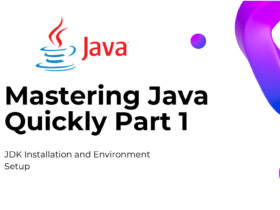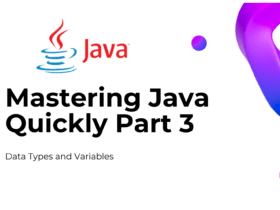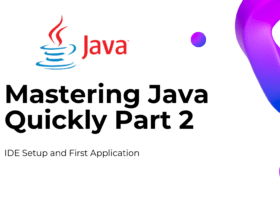As the complexity of any software system grows, techniques for managing it become necessary. An object oriented paradigm can assist in ensuring your code is flexible, reusable, and maintainable.
The Four Pillars
Four foundational concepts in object oriented programming are the basis for building high quality code.
- Abstraction
- Data Encapsulation
- Inheritance
- Polymorphism
Abstraction
Abstraction is the process of generalizing concrete details,[1] such as attributes, away from the study of objects and systems to focus attention on details of greater importance.
Wikipedia
Abstraction is a fundamental concept in Java and object-oriented programming that involves simplifying complex systems by representing only the essential features while hiding unnecessary details. It provides a high-level view of an entity or system, allowing developers to focus on what an object does rather than how it does it. In Java, abstraction is achieved through abstract classes and interfaces, which define a blueprint for classes to implement. Abstract classes can have both concrete (implemented) and abstract (unimplemented) methods, while interfaces define a contract of methods that implementing classes must provide.
Abstraction is vital for several reasons in Java software engineering. Firstly, it enhances code maintainability and scalability by promoting a modular and organized code structure. Developers can work on specific components without needing to understand the intricate workings of the entire system. Secondly, abstraction facilitates code reusability by allowing multiple classes to implement a common interface or inherit from an abstract class. This promotes the “DRY” (Don’t Repeat Yourself) principle and reduces redundancy. Finally, abstraction encourages a clear separation of concerns in software design, making it easier to debug, test, and extend applications. It helps software engineers build robust, flexible, and maintainable Java software systems, making it a crucial concept in the field.
Data Encapsulation
Data encapsulation is a fundamental concept in Java and object-oriented programming that involves bundling data (attributes) and the methods (functions) that operate on that data within a single unit known as a class. This unit, called an object, provides a way to control access to the internal state of an object, ensuring that data is not directly accessible from outside the class. This encapsulation of data and methods within a class is achieved through the use of access modifiers like private, protected, and public.
Data encapsulation is essential for several reasons:
- Data Integrity: By restricting direct access to data and providing controlled methods (getters and setters), you can ensure that data remains consistent and valid, reducing the risk of accidental data corruption.
- Abstraction: Encapsulation hides the internal implementation details of a class, providing a clear and simplified interface for interacting with objects.
- Security: By encapsulating data, you can protect sensitive information and control who can modify it. Private data members are inaccessible from outside the class, making it harder for unauthorized code to tamper with critical data.
- Code Maintainability: Encapsulation promotes modular design and code reusability. Classes become self-contained units that can be reused in various parts of the program without affecting other components, leading to more maintainable and scalable codebases.
Inheritance
Inheritance is a fundamental concept in object-oriented programming and it plays a pivotal role in code organization and reuse. Inheritance allows a class to acquire the properties and behaviors (fields and methods) of another class, referred to as the superclass or parent class. The class that inherits from the parent class is called the subclass or child class. The primary purpose of inheritance is to promote code reusability and to establish a hierarchical relationship between classes.
In Java, inheritance is achieved using the extends keyword, where a subclass extends a superclass. The subclass inherits the fields and methods of the superclass and can also add new fields and methods or override existing ones to customize its behavior. This enables developers to create a more specialized class (subclass) that shares common attributes and behaviors with a more general class (superclass) without duplicating code. It fosters a more organized and maintainable codebase, reduces redundancy, and simplifies the design and maintenance of complex systems.
Moreover, inheritance facilitates polymorphism, another crucial concept in object-oriented programming. Polymorphism allows objects of different classes to be treated as objects of a common superclass, promoting flexibility and extensibility in code. In summary, inheritance is a cornerstone of object-oriented programming, fostering code reusability, organization, and the creation of flexible and maintainable software systems. Understanding and effectively implementing inheritance is a key skill for Java software engineers to build scalable and maintainable applications.
Polymorphism
Polymorphism is a fundamental concept in object-oriented programming and it plays a pivotal role in enhancing code flexibility and maintainability. At its core, polymorphism allows objects of different classes to be treated as objects of a common superclass. This means that you can write code that operates on objects at a more abstract level, without needing to know their specific, concrete types. Polymorphism is achieved through method overloading and method overriding.
Method overloading is a concept where multiple methods in the same class have the same name but different parameters. Method overloading is determined at compile-time, where the compiler chooses the appropriate method based on the number and types of arguments in the method call. It enables you to provide multiple ways to interact with an object by accepting different argument sets.
Method overriding occurs when a subclass provides its own implementation of a method that is already defined in its superclass. When you have a reference to an object of the superclass, but it points to an instance of the subclass, invoking a method on that reference will execute the overridden method in the subclass. This enables you to write code that can work with various subclasses of a common superclass without knowing their exact types. Method overriding is resolved at runtime through a mechanism called “dynamic dispatch.” When you invoke a method on a reference to a superclass pointing to an instance of a subclass, Java looks at the actual type of the object at runtime and calls the overridden method in the subclass if it exists, allowing for the flexibility and polymorphic behavior.
The importance of polymorphism lies in its ability to enhance code reusabiity and extensibility. By programming to interfaces or abstract classes, you can create more modular and scalable software systems. It promotes the “open-closed principle,” which suggests that classes should be open for extension but closed for modification. This means you can introduce new classes (subclasses) without altering existing code, reducing the risk of introducing bugs and making your codebase more maintainable. Polymorphism also enables the creation of generic and flexible algorithms that can work with a wide range of object types, which is crucial for writing efficient and adaptable Java software.




Leave a Reply